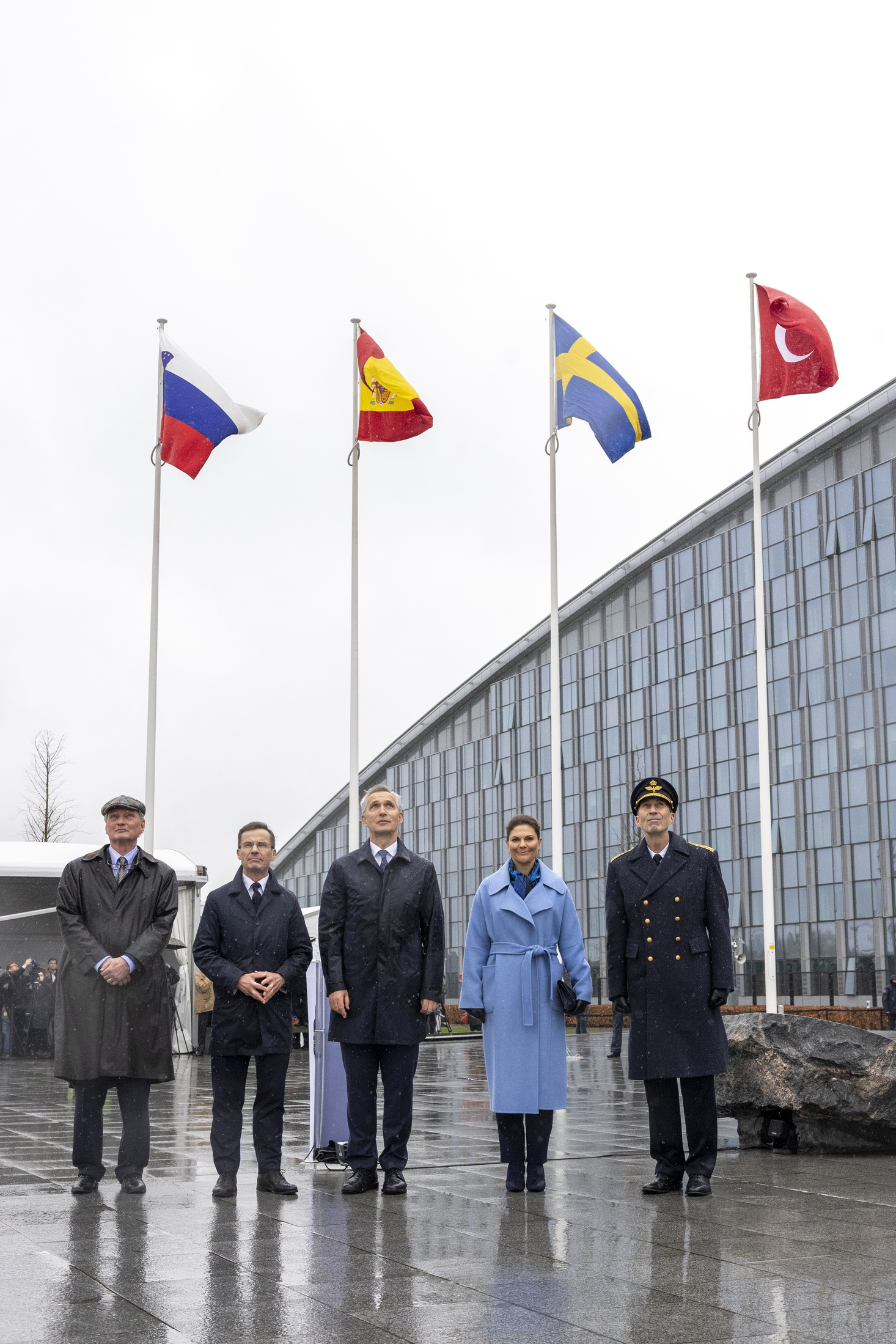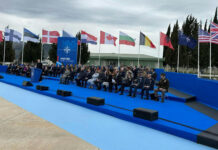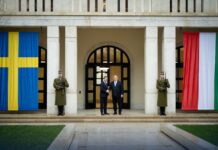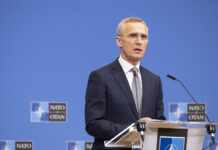A flag-raising ceremony was conducted at NATO Headquarters in Brussels on 11 March 2024 to mark Sweden becoming the 32nd member of the alliance. Flag-raising ceremonies took place simultaneously at Allied Command Operations (SHAPE) in Mons, Belgium, and Allied Command Transformation in Norfolk, Virginia, in the United States.
Sweden officially became a NATO member on 7 March when Swedish Prime Minister Ulf Kristersson formally handed over the country’s accession documents to the US State Department in Washington, DC, where the NATO charter is held.
Ahead of the flag-raising ceremony in Brussels, NATO Secretary General Jens Stoltenberg welcomed Kristersson to NATO Headquarters and thanked the Swedish prime minister for his strong personal leadership and commitment in leading Sweden into NATO. “Sweden has taken its rightful place at NATO’s table under the shield of Article 5 protection: the ultimate guarantee of our freedom and security,” said Stoltenberg. “All for one and one for all.
“Sweden’s accession shows again that NATO’s door remains open,” Stoltenberg added. “No one can close it. Every nation has the right to choose its own path, and we all choose the path of freedom and democracy.”
The final path to Sweden’s membership of NATO was cleared after the Hungarian National Assembly voted ‘yes’ on 26 February 2024 in relation to Sweden’s application to join the alliance.
Both Sweden and Finland, which officially joined NATO on 4 April 2023, had formerly been neutral nations: Sweden since 1812 and Finland since the end of the Second World War. However, Russian President Vladimir Putin’s invasion of neighbouring Ukraine in February 2022 irrevocably altered the military-geopolitical climate in Europe. With broad support in the Riksdag, the Swedish government applied for NATO membership on 16 May 2022 and on 5 July 2022 all NATO member countries signed the Accession Protocol for Sweden.
Overall, Putin’s goal of limiting the size of NATO and retaining a ‘buffer zone’ between Russia and the alliance must be regarded as a failure. While many Eastern European nations demonstrated a natural proclivity to join the security and economic frameworks of the West once free of their communist governments after the Cold War, Putin’s military interventions – in Georgia in 2008, Crimea in 2014 and most obviously in the whole of Ukraine since 2022 – have only served to compound gravitations toward the West.
When Putin officially became Russian president in March 2000 there were 19 NATO allies and Russia shared a border with just one of them: Norway. Now, with 32 allies in the alliance, Russia shares a border with five NATO nations – Norway, Finland, Estonia, Latvia and Poland – while Georgia and Ukraine also have aspirations to join the alliance.













